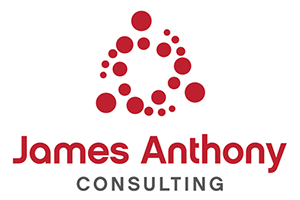Essential API Security: Key Takeaways from the Shieldfy API Security Checklist
APIs (Application Programming Interfaces) power modern software systems, enabling applications to communicate and exchange data seamlessly. However, they also pose unique security challenges. Poorly secured APIs can become gateways for breaches, exposing sensitive data or allowing unauthorized access to critical systems.
At James Anthony Consulting, we champion best practices in API security, whether in development, testing, or deployment. That’s why we recommend Shieldfy's API Security Checklist—a concise, actionable guide covering vital security measures for any API project.
Here’s a summary of the checklist and how you can implement it effectively.
Key API Security Best Practices
1. Authentication
Use secure and standard authentication methods, such as OAuth2.
Avoid using sensitive data (e.g., usernames, passwords) in URLs—prefer headers or the body.
Never expose tokens publicly, and always revoke them when no longer needed.
2. Authorisation
Implement role-based access control (RBAC) to enforce permissions.
Validate user roles and access levels for every API call—never assume default permissions.
3. Data Validation
Validate all inputs on the server side, regardless of client-side validations.
Use strict content type headers (
Content-Type,Accept) to prevent injection attacks.
4. Rate Limiting and Throttling
Avoid abuse by setting thresholds for API requests based on user or IP.
Implement mechanisms to block excessive or malicious traffic without affecting legitimate users.
5. Error Handling
Return generic error messages to users while logging detailed ones server-side.
Avoid exposing sensitive implementation details in error responses (e.g., stack traces).
6. Encryption and Transport Layer Security (TLS)
Enforce HTTPS for secure communication, ensuring data is encrypted during transit.
Regularly update SSL/TLS certificates to avoid vulnerabilities.
7. Logging and Monitoring
Monitor API traffic for unusual patterns or anomalies.
Implement detailed logging for security events, including failed authentication or authorization attempts.
8. Secure Storage
Never store sensitive information like passwords or tokens in plain text.
Use encrypted storage mechanisms and follow "secure by default" principles.
Our Top Hints for Securing Your API
Automate Security Testing
Integrate security testing into your CI/CD pipeline. Tools like OWASP ZAP or Burp Suite can identify common vulnerabilities during development.Perform Regular Audits
Conduct frequent reviews of your API architecture, especially after updates or new integrations.Limit Data Exposure
Only expose the data necessary for the API's function. Use whitelisting to control what fields are accessible.Use API Gateways
Implement an API gateway to centralise security controls, such as authentication, rate limiting, and analytics.Stay Updated on Security Trends
Security threats evolve. Stay informed through resources like OWASP and GitHub repositories like Shieldfy’s to keep your practices current.
Conclusion
API security is critical in a world where digital systems are interconnected and data breaches can cost millions in reputational damage and regulatory penalties. By following a checklist like Shieldfy’s API Security Checklist, you lay the foundation for a robust, secure API that safeguards your users, business, and stakeholders.
At James Anthony Consulting, we offer expert guidance in API security, from initial design to ongoing maintenance. Reach out to our team to fortify your digital systems with industry-leading practices.
Visit the Shieldfy API Security Checklist on GitHub to explore the full list of countermeasures.
Need a tailored API security audit? Contact JAC today!

